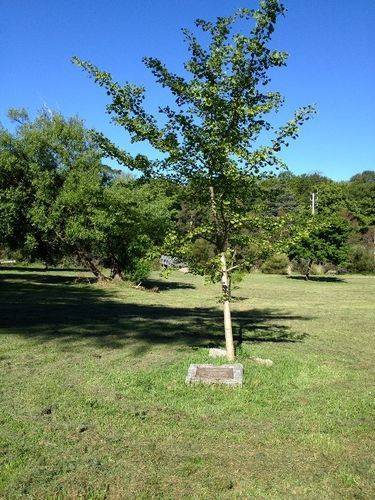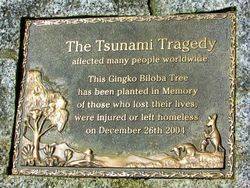
Home » Themes » Disaster » Earthquake
The Tsunami Tragedy Print Page 
A Gingko Biloba Tree commemorates those who died, were injured or left homeless by the Tsunami that occurred on 26th December 2004.
The earthquake that generated the great Indian Ocean tsunami of 2004 is estimated to have released the energy of 23,000 Hiroshima-type atomic bombs, according to the U.S. Geological Survey (USGS). Giant forces that had been building up deep in the Earth for hundreds of years were released suddenly on December 26, shaking the ground violently and unleashing a series of killer waves that sped across the Indian Ocean at the speed of a jet airliner.
By the end of the day more than 150,000 people were dead or missing and millions more were homeless in 11 countries, making it perhaps the most destructive tsunami in history.
The epicenter of the 9.0 magnitude quake was under the Indian Ocean near the west coast of the Indonesian island of Sumatra, according to the USGS, which monitors earthquakes worldwide.
Note: A tsunami is a very large ocean wave caused by an underwater earthquake or volcanic eruption.
Location
| Address: | Aitken Street, John Aitken Reserve, Gisborne, 3437 |
|---|---|
| State: | VIC |
| Area: | AUS |
| GPS Coordinates: | Lat: -37.484758 Long: 144.59254 Note: GPS Coordinates are approximate. |
Details
| Monument Type: | Tree |
|---|---|
| Monument Theme: | Disaster |
| Sub-Theme: | Earthquake |
| Actual Event Start Date: | 26-December-2004 |
| Actual Event End Date: | 26-December-2004 |
Dedication
The Tsunami Tragedy affected many people worldwide
This Gingko Biloba Tree has been planted in memory of those who lost their lives, were injured or left homeless
on December 26th 2004






